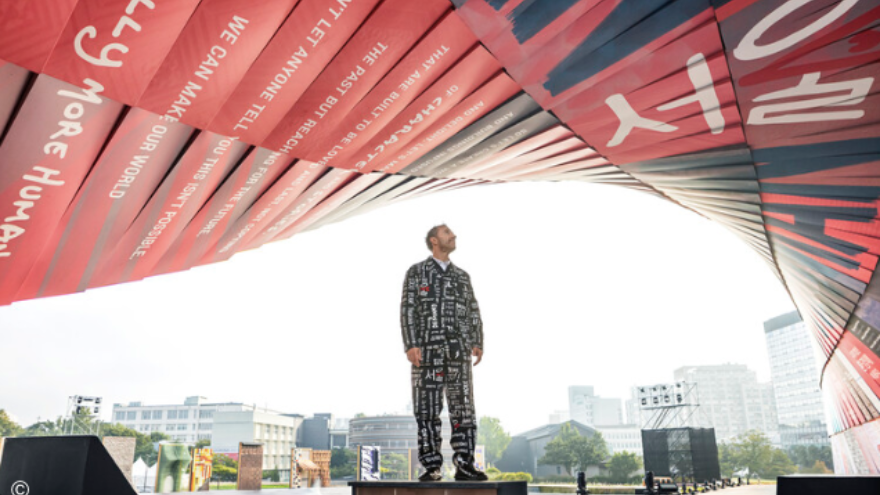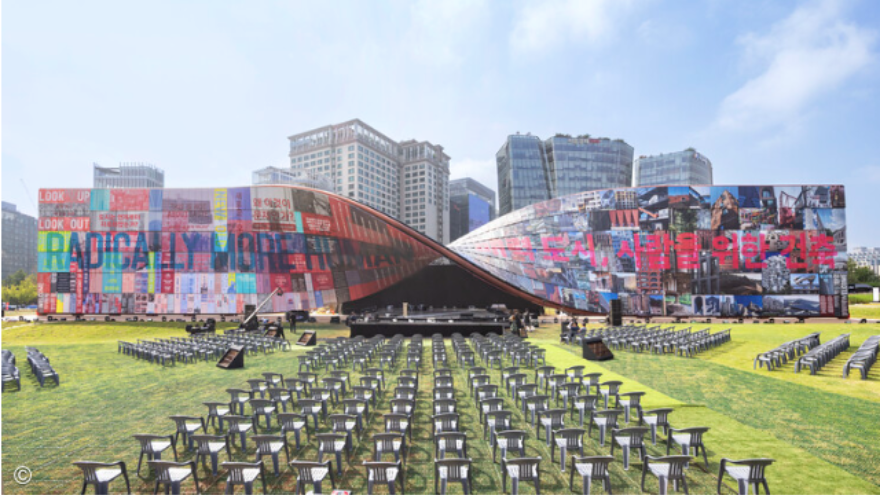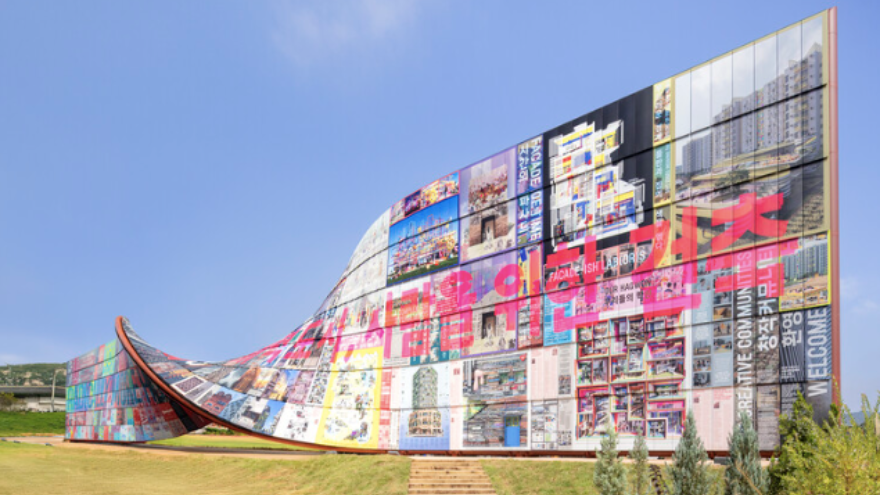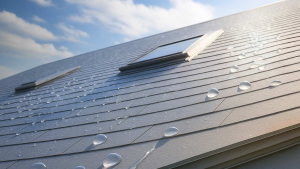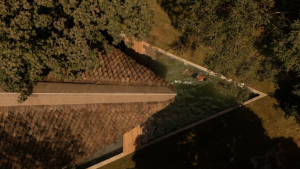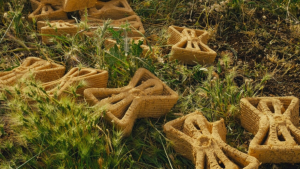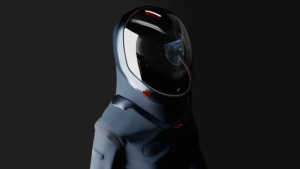Under the theme “Radically More Human,” the event explores the theme “how can architecture evoke joy, connection, and care—rather than cold, repetitive functionality?”
At the centrepiece, dubbed the gateway to the festival, is the Humanise Wall, a 90m twisted steel structure in Songhyeon Green Plaza. The structure is covered in a series of images of buildings that draw attention to the need for visual complexity in architecture. Clad with images of 400 buildings and community projects from 38 nations, the wall stitches together global stories into a single, hopeful tapestry. It reframes façades from neutral backdrops into expressive, emotional canvases.
The Humanise wall is an extension of Heatherwicks’ ‘Humanise’ campaign. The campaign criticizes the rise of monotonous, lifeless buildings, arguing that they harm our minds, our economy, and the environment, while urging the creation of joyful, engaging, and human-centered architecture and cities. Central to this vision are the 24 ‘Walls of Public Life’ a parallel installation to the main Humanise Wall, in which global creatives reimagine building exteriors not as flat backdrops but as emotional, civic participants.
Each “wall” is a 2.4 × 4.8 m miniature façade built as a provocation, not a prototype of perfection. fragments line the north side of Songhyeon Green Plaza, facing the Humanise Wall, creating a dialogue between scale, texture, and presence.
What makes them compelling is their authorship: the 24 esteemed contributors come from a wide range of disciplines—architecture, fashion, culinary arts, craft, design, and even automobile engineering. Among them: Francis Kéré, Stella McCartney, Kengo Kuma & Associates, MAD Architects, Edward Lee (chef), Yinka Shonibare, Stephen Webster, NAMELESS Architecture, artisans from Burkina Faso and Hyundai’s engineering team.
Heatherwick hopes the walls prompt not just public curiosity but operational change: let developers and designers ask, Why not more expressive skins? Why stick with bland, “soul-ess” surfaces when façades can be alive?
Running until 18 November 2025, the Biennale signals Seoul’s ambition to lead not just in infrastructure and density, but in architectural empathy. It’s a call: cities must be built not just to serve, but to connect, uplift, and belong.

